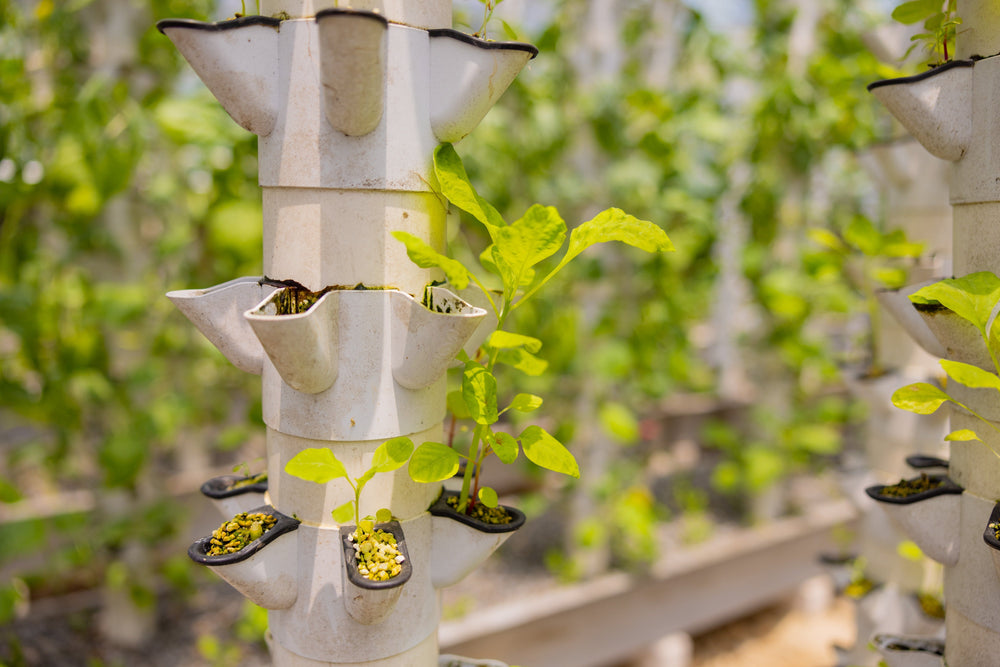
In this world that faces environmental crises, food scarcity, and population boom, the ancient question resurfaces: How do we feed everybody sustainably? Enter the contenders—Hydroponics, the upstart tech wizard, and Commodity Farming, the seasoned veteran.
What's the ruling? Spoiler alert: They both have a place and only one can save the world. Let us dive into that juicy debate and see why Planted Detroit could be rewriting how we know we farm.
Hydroponics: Farming Without Dirt, But Not Without Drama
The Soilless Science of Hydroponics:
Hydroponics comes from a completely another sci-fi dream world, as the name reveals, but they are real-revolutionary replacements of soil that remove much guessing of traditional farms. Controlled environments, constant yields, growths up to 50 percent faster; picture this: your strawberries in December, growing in a totally pesticide-free ecosystem. That's hydroponics magic right here.
Hydroponics: The Flex of Flows
Water-Saving Wizardry: It uses up to 90 percent less water compared to traditional farming.
Bye-bye pests: No soil, no pests, no heavy pesticide sprays.
Compact & High-tech: Urban farming? No problem. Hydroponics works vertically, too.
Commodity Farming: The OG of Agriculture
Commodity farming is the bread and butter of agriculture, producing the staple crops in huge quantities: wheat, soybeans, and corn. But there is one catch: commodity farming isn't perfect. Its reliance on monocropping, hefty doses of chemical use, and massive land demands make it as taxing on the environment as is necessary to our diets.
Challenges of Commodity Farming
Commodity farming, although essential to feed billions, is fraught with problems that are taxing our planet's resources:
Soil Erosion
Some of the fiercest enemies of commodity farming are monoculture crops. The effect is erosion of nutrients from the soil over time, rendering the soil barren and less productive. This decreases not only yields but threatens long-term agricultural viability.
Water Wastage
Traditionally, farming requires much water through irrigation. Crops such as rice and cotton are among the most water-intensive and may drain the local source of water while aggravating drought.
Chemical Addiction
The increased use of synthetic fertilizers and pesticides pollutes water bodies, kills many animals, and generates greenhouse gases. Eventually, pests and weeds also develop resistance to chemicals, creating a vicious circle.
This only emphasizes the growing necessity for sustainable farming practices.
Hydroponics vs. Commodity Farming: Key Differences
Environmental Impact
Hydroponics can be placed diametrically different from commodity farming in terms of environmental impact since hydroponics does not use soil while requiring 90% less water than conventional agricultural practices. Recycled water through the system results in little waste from evaporation or even runoff, making commodity farming problematic due to widespread irrigation that tends to exacerbate water scarcity in many areas of the world.
Another major difference lies in land usage. Hydroponics can cultivate food vertically, thus being very feasible in the urban environment. Commodity farming, on the other hand, requires large chunks of land and usually results in deforestation and habitat destruction.
Inputs for chemicals also greatly differ. Hydroponics will reduce the use of pesticides and fertilizers by giving plants accurately what they want, thus curbing pollution. On the contrary, commodity farming normally involves massive uses of chemicals in large quantities, degrades the soils, pollutes water sources, and destroys ecosystems.
Hydroponics, on its part, yields a smaller footprint on the environment, thus welcoming a greener future.
Crop Variety and Nutrition
Hydroponics excels at growing a diverse range of crops, from leafy greens and herbs to strawberries and edible flowers. This approach promotes year-round production of nutrient-rich produce customized according to the consumer's preference. Hydroponic crops tend to be fresher and tastier because the supply chain is shorter and controlled by the environment under which it was grown.
Hydroponic farming is rather calorie-rich crops like wheat, corn, and soybeans-the backbone of most food supplies. Although calorie-rich crops fulfill the urgent issues of hunger and malnutrition in many developing areas, these lack the nutritional content and diversity available in the crops grown under hydroponics systems.
Thus, hydroponic farming serves to complement the economic approach that focuses on calorie-rich staples by offering an alternative system in which to enhance nutritional variety.
Economic Considerations
Hydroponics requires an initial investment, including technology and infrastructure, plus operational expertise, which is somewhat higher. Nevertheless, its efficiency and year-round production make hydroponics an excellent scalable option for urban agriculture and local markets. Over time, operational costs will decrease due to the effectiveness of the system and its dispersion.
Commodity farming, in contrast, enjoys economies of scale but is vulnerable to market price fluctuations, weather uncertainties, and increasing costs of inputs. Even though it may be more economical for massive food production, it may also create insecurity for smaller farmers about their financial positions.
The above advantages hydroponics can offer, about consistent yield and reducing wastage of resources, give an edge over other modes of agriculture for sustained food system projects.
The Plot Twist: Can They Work Together?
Get straight to one point: this isn't a winner-takes-all. Commodity farming is still going to be your best bet when it comes to mass-scale grain and staple crops. Hydroponics, though, is where specialty farming of the future happens—that is, guaranteed sustainable supplies of fresh, healthy foods.
A world where each method thrives together—local, nutrient-dense produce under hydroponics and commodity farms for the bulk of essentials.
Why Planted Detroit is Stealing the Show
The innovative use of hydroponics has redefined agriculture at Planted Detroit. In a world saturated with environmental issues, we are bringing focus to sustainable, soil-free farming that is economical and community-conscious. Compared with traditional farming, their system consumes up to 90% less water, does not require pesticides, and yields fresh, nutrient-rich crops all year round, without taking much space.
What truly sets Planted Detroit apart is its focus on local impact. By growing food in urban spaces, they are bringing fresh produce closer to the consumer, thereby reducing carbon-heavy supply chains and ensuring communities have access to healthy, high-quality options. Vibrant salad greens and delicate edible flowers aren't just farmed-they are crafted with care for flavor and nutrition.
Beyond the innovative practices, Planted Detroit is future farming: green, massive-scale, and good for society as well. Food isn't what they're farming; they're building a future for intelligent agriculture that makes an impact on man and nature.
While aiming to reshape how people conceive of farming, Planted Detroit isn't involved in the new wave of farm revolution; rather, it has taken the driver's seat. And there's the difference between stealing it all and working towards something.
Wrapping It Up: The Future of Farming
Hydroponics and commodity farming each have strengths and weaknesses. One thing remains clear, though: we're going to have to innovate for the world's future food source. Planted Detroit and hydroponics are leading beacons showing what is achievable when technology meets sustainability and a community.
So, will it be the establishment or the revolutionary? Either way, the farm of the future remains in our grasp-and it will be pretty green.
Ready to join the movement? Dive into hydroponics with Planted Detroit and be part of the solution.
